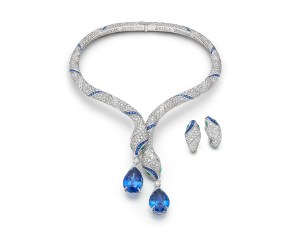
12 Of The Best Watches For Women To Wear, Collect And Gift To Others
The best women’s watches are equal parts function and fashion. They come in different styles, sizes and designs, which you can switch up depending on your look or mood of the day. While certain brands have become well-known classics (Rolex, Cartier, Hermès), there are plenty of modern, less pricey brands on the market worth investing in right now. This is not news to watch collectors and connoisseurs who are driving the demand for vintage pieces and modern cult favorites to build out their collections.
If you choose wisely and take good care of what you buy, in fact, your watch can increase in value and last for decades. Unlike smartwatches, these real-deal, non-tech watches don’t need to replaced every time a new model is released.
Ahead, we consulted the experts to find the best watches for women. You’ll find a mix of the classics, many of which you can find pre-owned from trusted e-retailers, and contemporary standouts, with the essential specs on the brand and what makes their watches worth collecting. And if you can’t quite give up tracking your steps, there’s even a discrete smartwatch that’s sophisticated enough to pair with a cocktail dress.
- Best Watches For Women Overall: Rolex
- Best Affordable Watches For Women: Briston
- Best Everyday Watches For Women: Shinola
- Best Designer Watches For Women: Hermès
- Best Stylish Smartwatches For Women: Garmin
- Best Jewelry Watches For Women: Piaget
- Best Entry-Level Collector Watches For Women: Cartier
- Best Mid-Level Collector Watches For Women: Omega
- Best Unique Watches For Women: Jaeger LeCoultre
- Best Investment Watches For Women: A. Lange & Söhne
- Best Minimalist Watches For Women: Breda
- Best Sport Watches For Women: Swatch
- Best Value Watches For Women: Norqain
What To Consider For Women’s Watches
Style
As with any accessory, when it comes to women’s watches there are as many styles as there are tastes. Dress watches are often intended for formal attire and sport watches are for, well, sporty activities. You may also encounter watches categorized as casual, jewelry or luxury. But ultimately, what matters most is that you like the style, says gemologist and jewelry and watch designer Rowena Murray. “Really and truly, what is most important is to choose a watch that is ‘you’. If you don’t identify with it, or if it doesn’t speak to you, then don’t go for it.” Murray adds that, “We’re all drawn to some designs more than others because they resonate with our identity or our style, whether subconsciously or not. So try to listen to that inner voice.”
Materials
There are multiple possibilities when it comes to materials. According to Murray, “You can go in completely opposite but equally prestige directions. Traditional luxury materials include precious metals, with or without precious stones. Alternatively, you can go for something technical, with materials such as titanium, ceramic or carbon (fiber).” In the middle, you have stainless steel, which is the classic go-to material for sport or entry-level luxury watch models, says Murray.
Although choosing one material over another relates to style and personal preference, watch consultant, author and Black Bough co-founder Alexander Barter remarks that “the longevity of a watch will depend on the case’s materials,” and recommends paying attention to the plating. “It’s important that people know if they’re actually buying a gold watch or a gold-plated watch. Depending on the plating’s quality, it can wear off relatively quickly, and while it’s possible to have things replaced, it’s difficult to get it done as well as when it was originally produced.”
Movement
The movement refers to the mechanism that powers the watch. Quartz watches use an electrical battery whereas mechanical watches rely on an array of components including switches and gears. Within mechanical watches, manual watches require winding them daily; automatic watches will do so by themselves as long as you’re wearing them. Choosing which option depends on what you want from your watch, says Murray: “A quartz watch will always be technically more accurate as it doesn’t need rewinding. On the other hand, a mechanical watch is about craftsmanship, the striving for accuracy and perfection, if not necessarily achieving both. It’s the touch of the hand versus the machine.”
Water resistance
A watch’s number-one enemy can be water, so it’s important to have some type of resistance to it. While almost any watch will withstand splashes from, say, the rain or doing the dishes, watchmakers usually design for higher levels of resistance. If you plan to shower or swim with your watch on, look for depth specified in feet, as well as bars or atmospheres (ATM) as measurement units.
Functions
Naturally, a watch’s function is to show the time. But beyond that, there’s a whole world of possibilities around what else it might do. Consider whether you just need hours and minutes or whether you also want the date, and highly specialized functions such as the moon phases or technically-complex ones such as flyback or tachymeters. Of course, a smartwatch is designed to provide all the tech-specific feedback you could ever dream of; the goal with a non-wired watch is often to streamline your life, and simply provide time, date and a few other details with an elegant esthetic.
What Are The Rules Of Wearing A Watch?
Traditionally a watch is worn on your non-dominant wrist, in order to best protect the watch since you use this hand less often. But you should feel free to wear your watch on whichever side is most comfortable to you without the watch getting in your way. You can switch up the side you wear day-by-day according to your activity level, or create a layered stack with bracelets and even add another different-sized watch. A watch is a personal investment and you have the freedom to wear—and style—it however you please.
Is It Ok For A Man To Wear A Women’s Watch?
Absolutely. While some brands do gender their styles, watches are actually unisex and can be worn by anyone. If one has a large wrist size, adding links or more holes on a leather strap might be required. Similarly, if you have a small wrist, a jeweler can remove links for a better fit. Smaller watch faces can look great on a man’s wrist, just as an oversized watch makes a chic statement on a woman’s wrist. Feel free to experiment with different sizes to see what works best for you.
How Tight Should A Woman’s Watch Be?
While watch fit is another personal preference, ideally it should have a little breathing room without cutting into you. The watch face should sit comfortably in the center of your wrist, right below your wrist bone, so it stays in place without flipping around, but not so snug that it cuts off your circulation or leaves a mark on the skin. It’s a good fit if you can slide one finger under the watchband without being able to move it around too much. Consider sizing down or visiting your jeweler if it’s too loose; the last thing you want is to risk the watch falling off and getting damaged.
More Stories To Shop:
Best Watch Brands
Best Watches For Men
Best Online Jewelry Stores
Coupons
display: block;
}
._drf2imde1feo00 .fbs-slider__slides {
width: 100%;
}
._drf2imde1feo00 .fbs-slider__controls {
display: block;
}
._drf2imde1feo00 .fbs-slider__slide[data-fbs-carousel-slide-id=”9cmm5e02b89k00″] {
display: block;
width: 100%;}
@media all and (max-width: 1024px) {
._drf2imde1feo00 .fbs-slider__controls {
display: block;
}
._drf2imde1feo00 .fbs-slider__slide[data-fbs-carousel-slide-id=”9cmm5e02b89k00″] {
display: block;
width: 100%;}
}
@media all and (max-width: 768px) {
._drf2imde1feo00 .fbs-slider__controls {
display: block;
}
._drf2imde1feo00 .fbs-slider__slide[data-fbs-carousel-slide-id=”9cmm5e02b89k00″] {
display: block;
width: 100%;}
}


